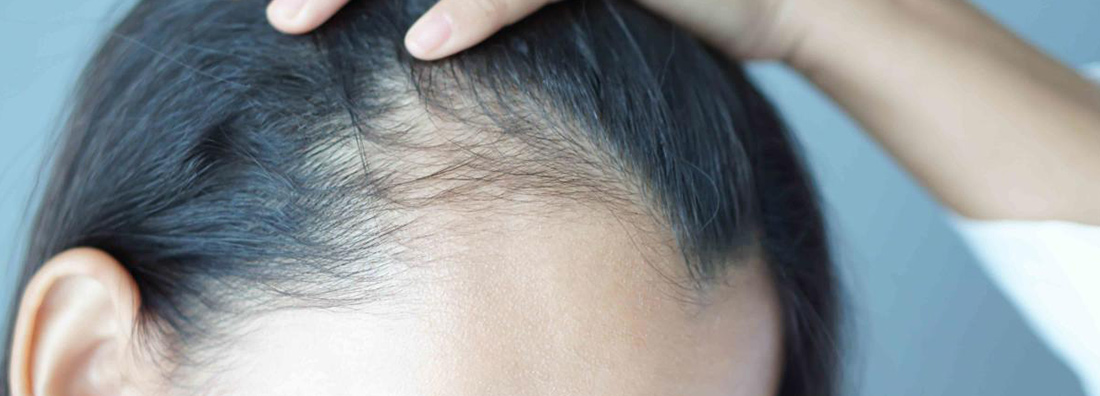
Hair loss is always a warning sign!
Many women associate hair loss with a natural condition of the body and, in fact, it is normal to notice the loss of some hairs daily. This occurs due to the normal hair production cycle.
When Is Hair Loss In Women A Concern?
Many of you have probably read or heard that losing up to 100 strands of hair per day is normal. However, there is a wide variation in this number among women. Some may lose more than this amount daily for years and not experience any problems, while others may experience less intense hair loss and still gradually progress to baldness.
Factors Associated with Hair Loss In Women
Increased hair loss in women is often caused by a change in the hair growth cycle known as telogen effluvium. Common situations that lead to telogen effluvium: postpartum period, surgeries (especially bariatric surgery), restrictive diets with rapid weight loss and acute infections. In these cases, what we call acute telogen effluvium usually occurs, with a marked and transient hair loss.
However, when hair loss continues for periods longer than six months, what we call chronic telogen effluvium occurs. In addition to the factors mentioned above, it is important to be aware of several situations that may be associated with hair loss, such as:
- Hormonal changes
- Thyroid disorders
- Polycystic ovary syndrome (PCOS)
- Lupus or other autoimmune diseases
- Use of certain medications
- Nutritional changes
- Stress
- Syphilis
- Chemical treatments that can lead to strands to break
Everything You Need To Know About Female Pattern Baldness
Baldness, in addition to affecting men, can also affect women. Around 30% of adult women have some degree of baldness.
Female baldness, also known as female androgenetic alopecia or female pattern alopecia, has some particularities in relation to male baldness.
The main signs of female baldness
When we think of baldness in men, one of the first signs that characterize this condition is the appearance of the famous “receding hairline”. However, in the case of female baldness, it is possible to observe a more diffuse thinning of the hair, mainly in the upper region of the scalp.
Women often notice thinning hair when they part their hair in the middle, which makes the parting area more visible and the scalp more evident.
In addition, you may notice less volume in your hair when you tie it back, and you may even notice the need to wrap the elastic around more times to create the hairstyle.
This condition often develops slowly and gradually. For this reason, some women only seek medical help and guidance when they experience very intense hair loss. To give you an idea, by the time a woman can see her scalp through the strands, she has probably already lost more than half of her hair volume.
Treatment Options For Female Pattern Baldness
The most commonly used treatment for female baldness is the application of minoxidil to the scalp.
The medication can be produced in liquid or foam form and should be used daily. In addition, minoxidil can also be used orally in low doses. The option for oral minoxidil can be beneficial especially for those patients who are bothered by the sensation of dirty, oily or dry hair that can occur with the application of topical minoxidil.
There are also studies with other medications that can be used in combination. However, like oral minoxidil, these medications are not indicated in the package insert for the treatment of female pattern baldness and should only be used under medical supervision. You can also try mesotherapy and biological serum application for your hair loss problem.
Another treatment option for female pattern hair loss is hair transplantation!
Regarding hair transplants in women, it is important to know that the technique is the same as that used in men. Thus, the follicular units (structures that contain the hair roots) are removed from the donor area (usually the nape and side of the scalp) and are then positioned in the region that needs to be treated. Since Hera Derma is a dermatology clinic, our specialist physicians perform the necessary medical follow-ups for your hair loss treatment, analyze your results with the necessary laboratory tests, and apply the most suitable treatments that will cure your hair loss. If you notice that you are losing your hair, consider not wasting your time. All of these treatment options require a specialist opinion first, so it is important to call us for an initial appointment and start the treatment that our experts have tailored to your needs as soon as possible.

